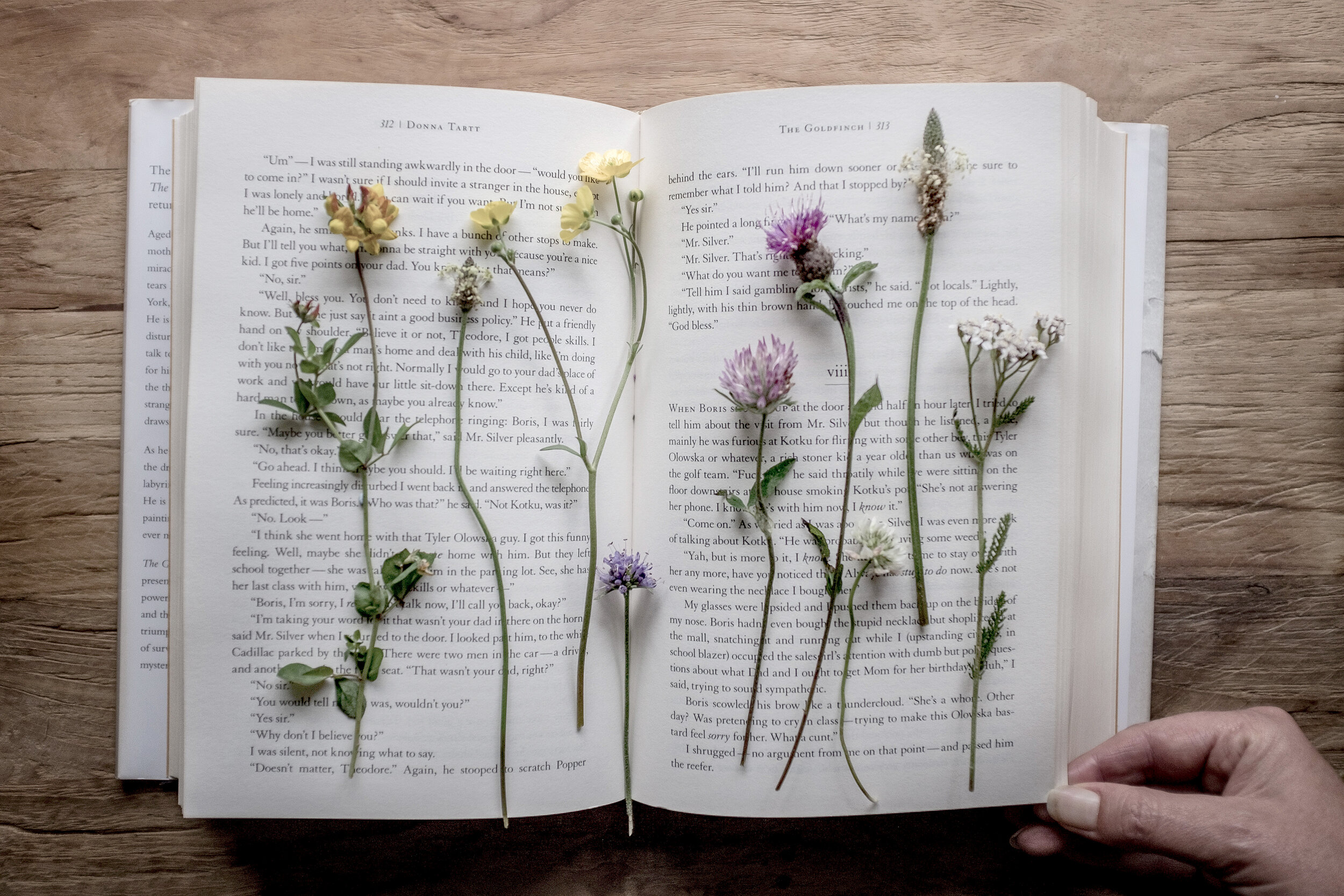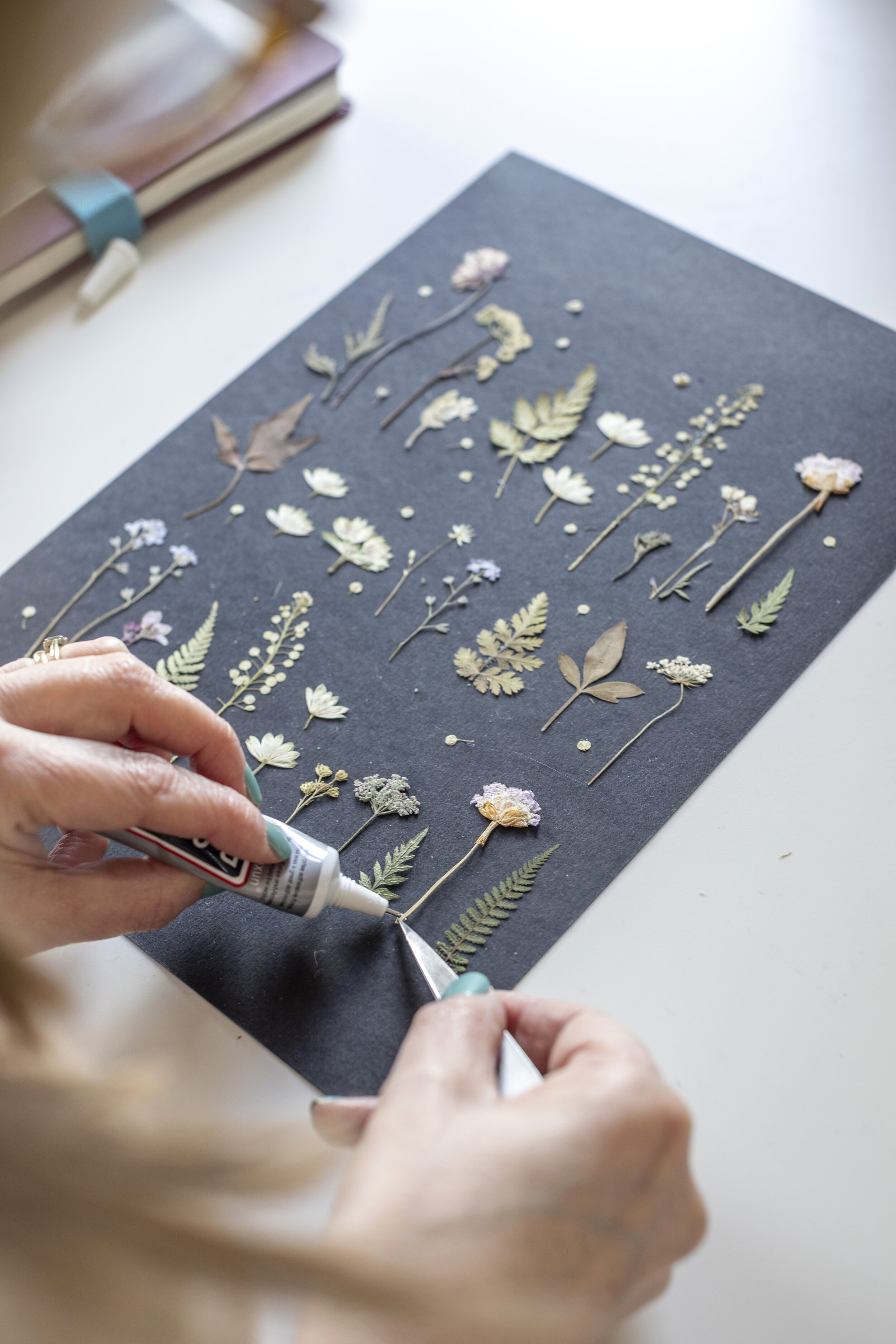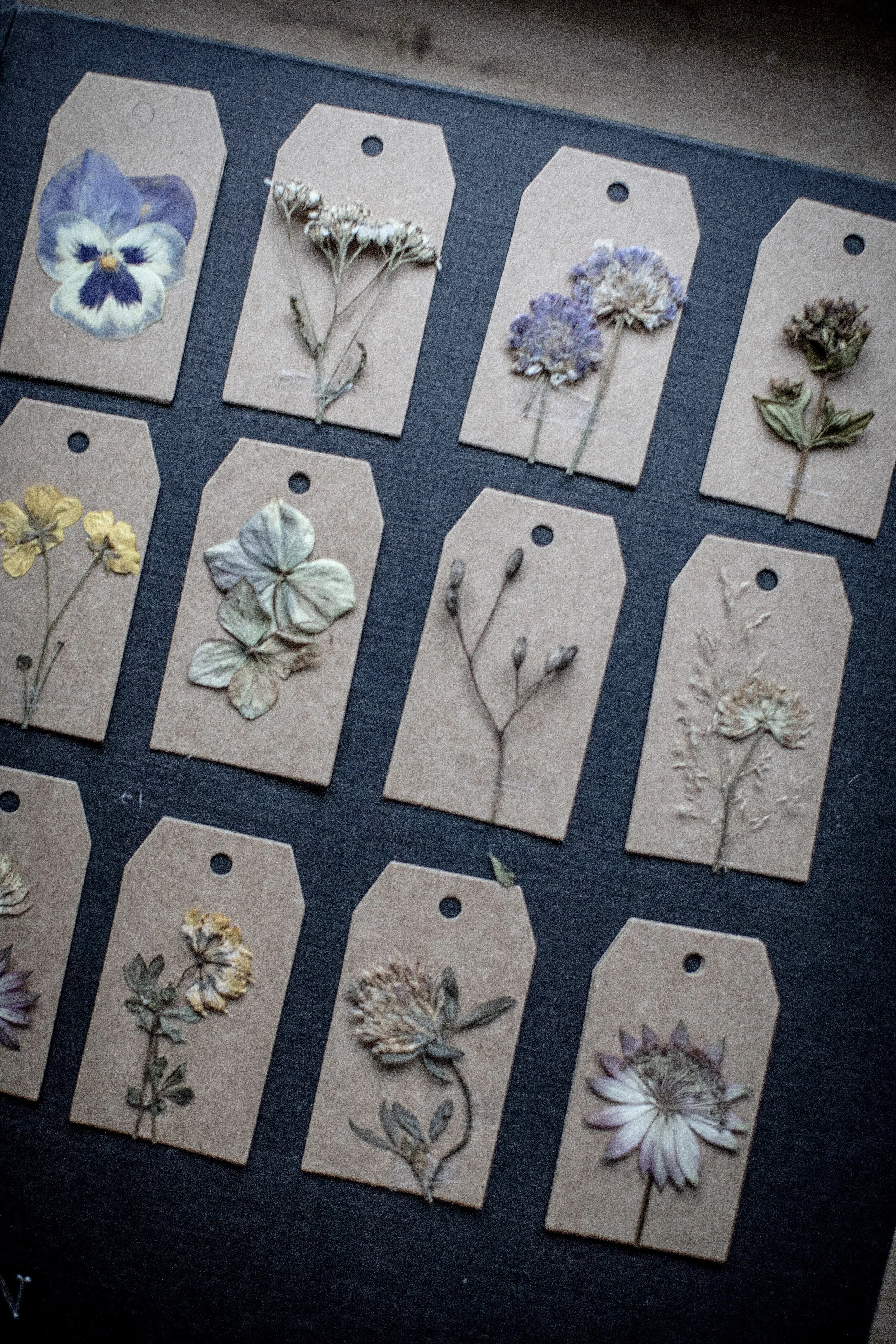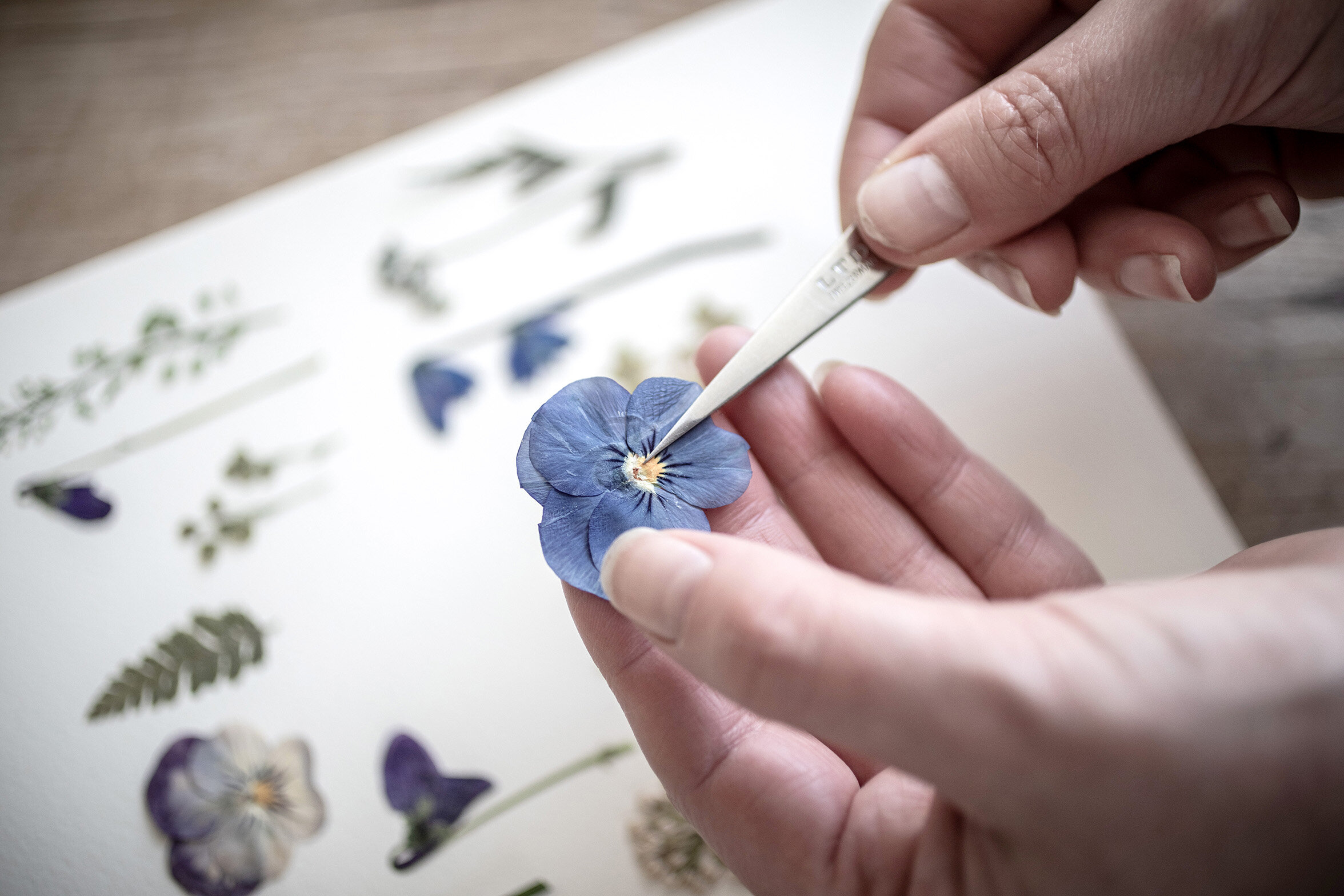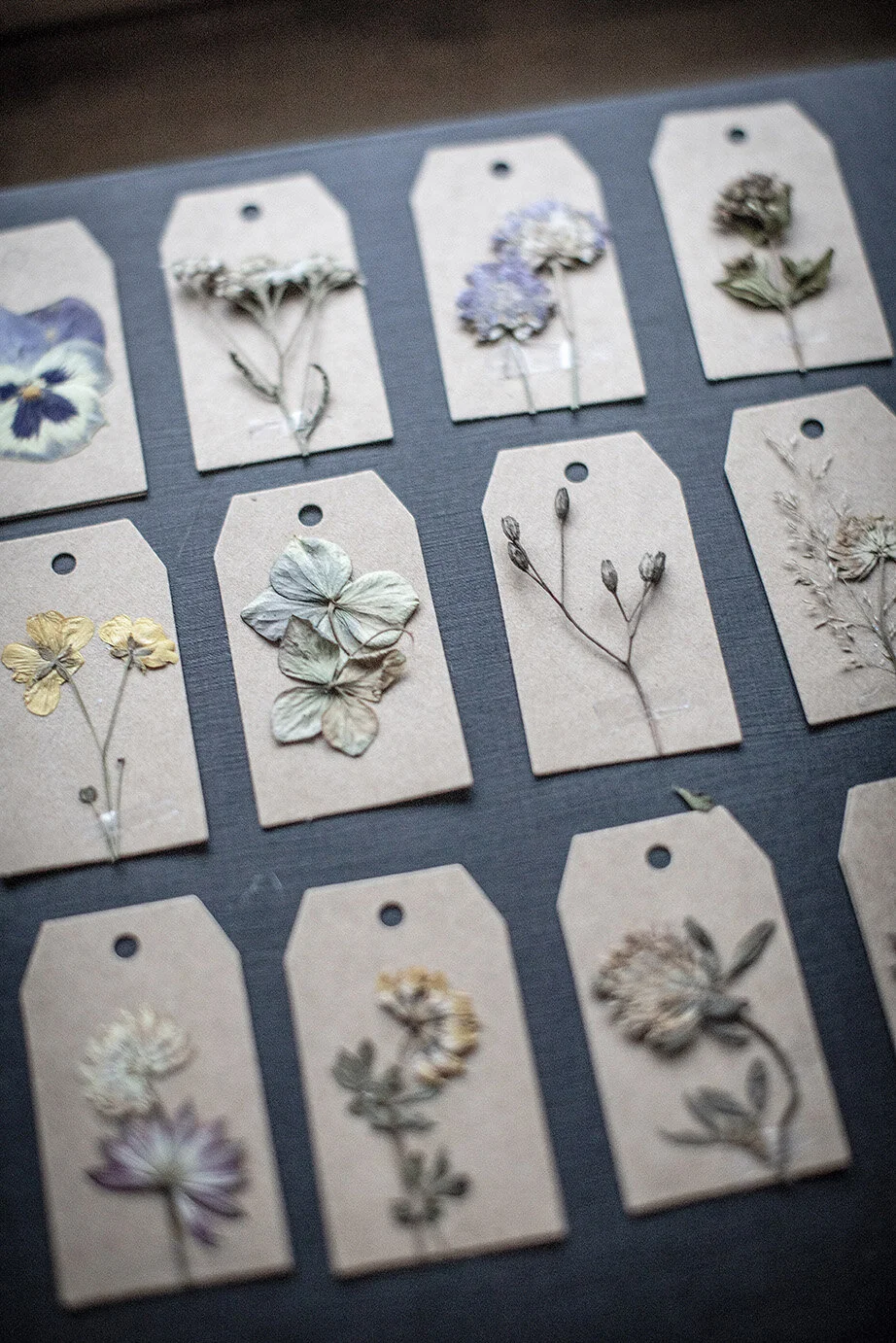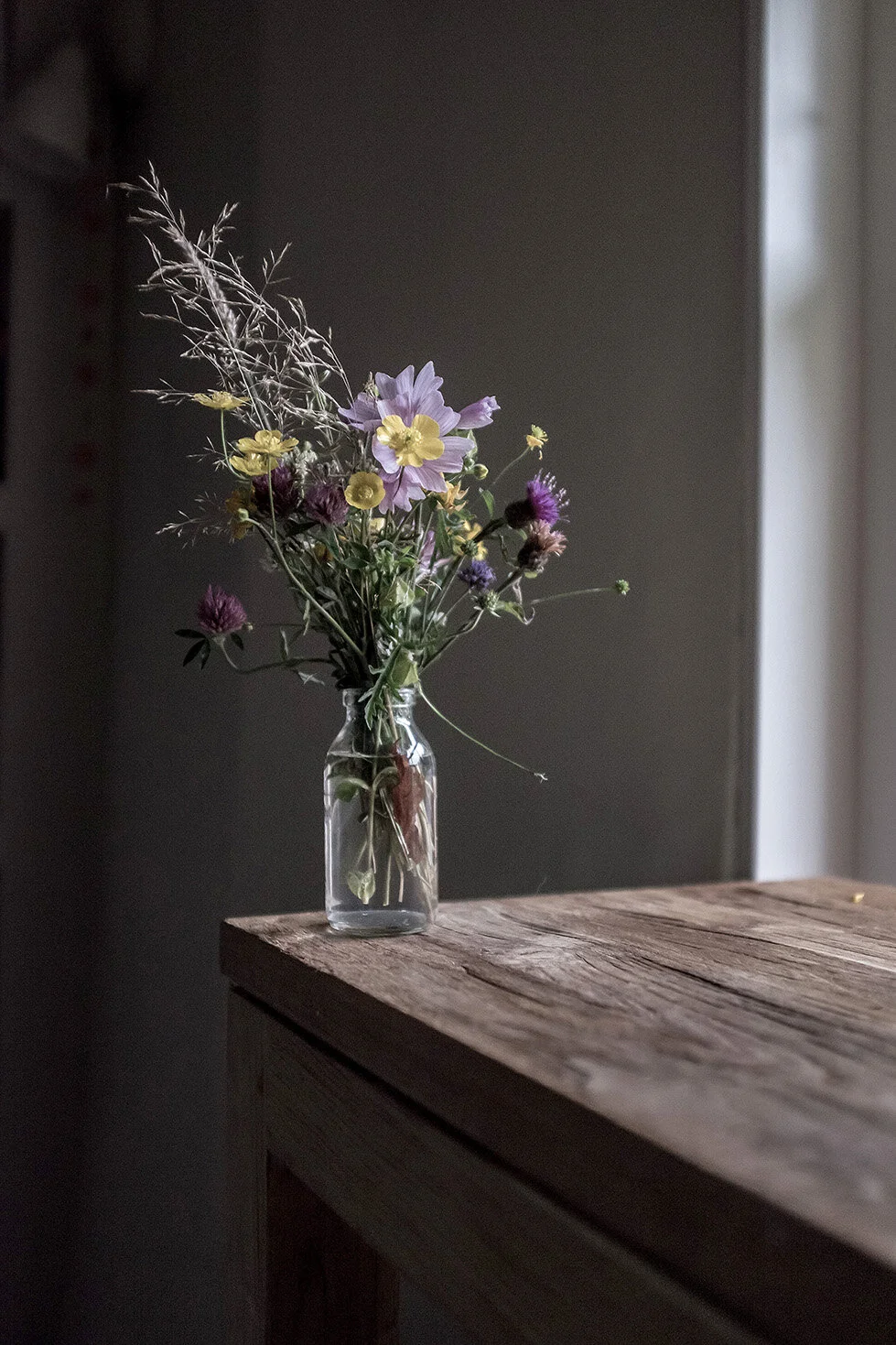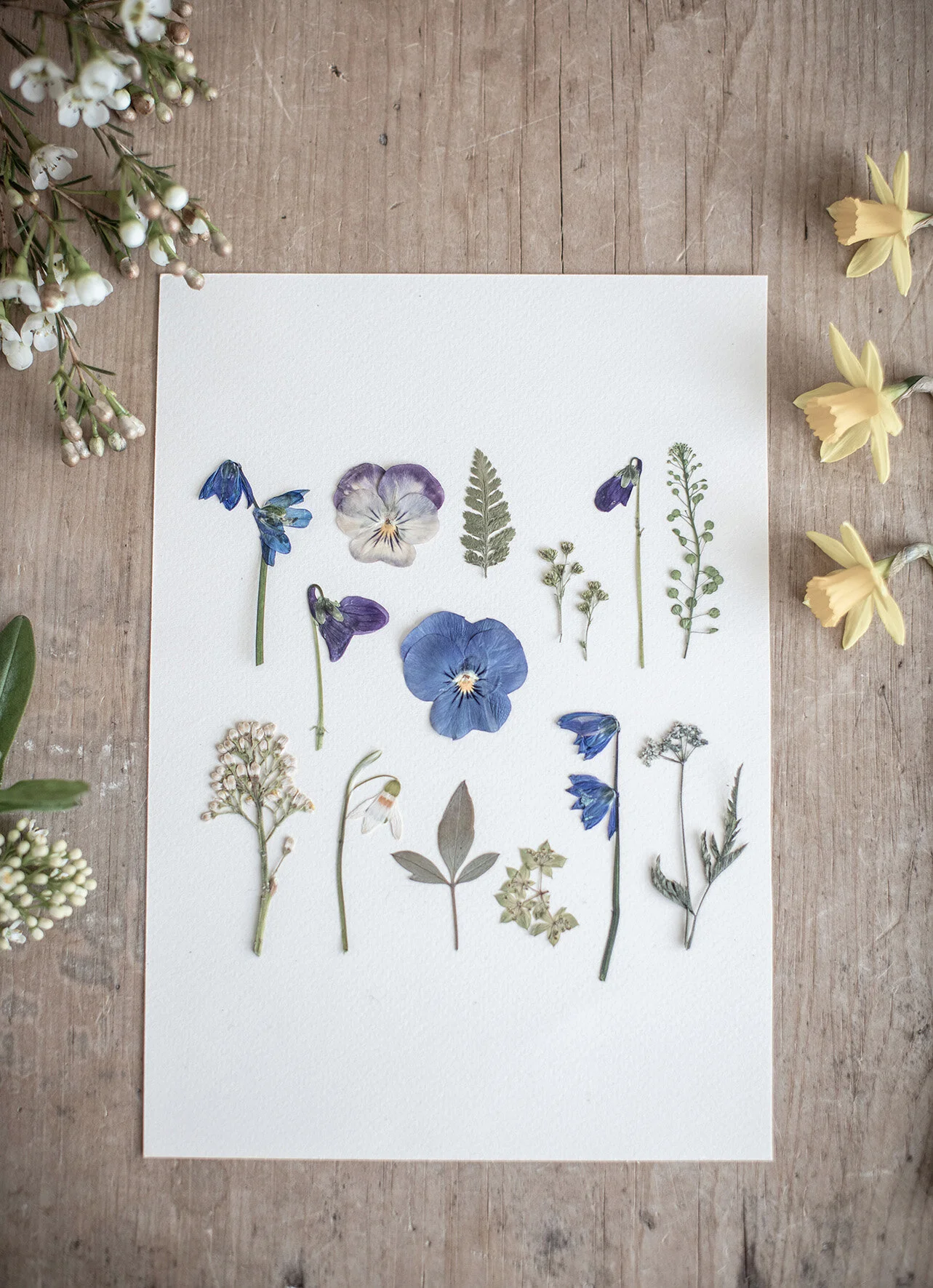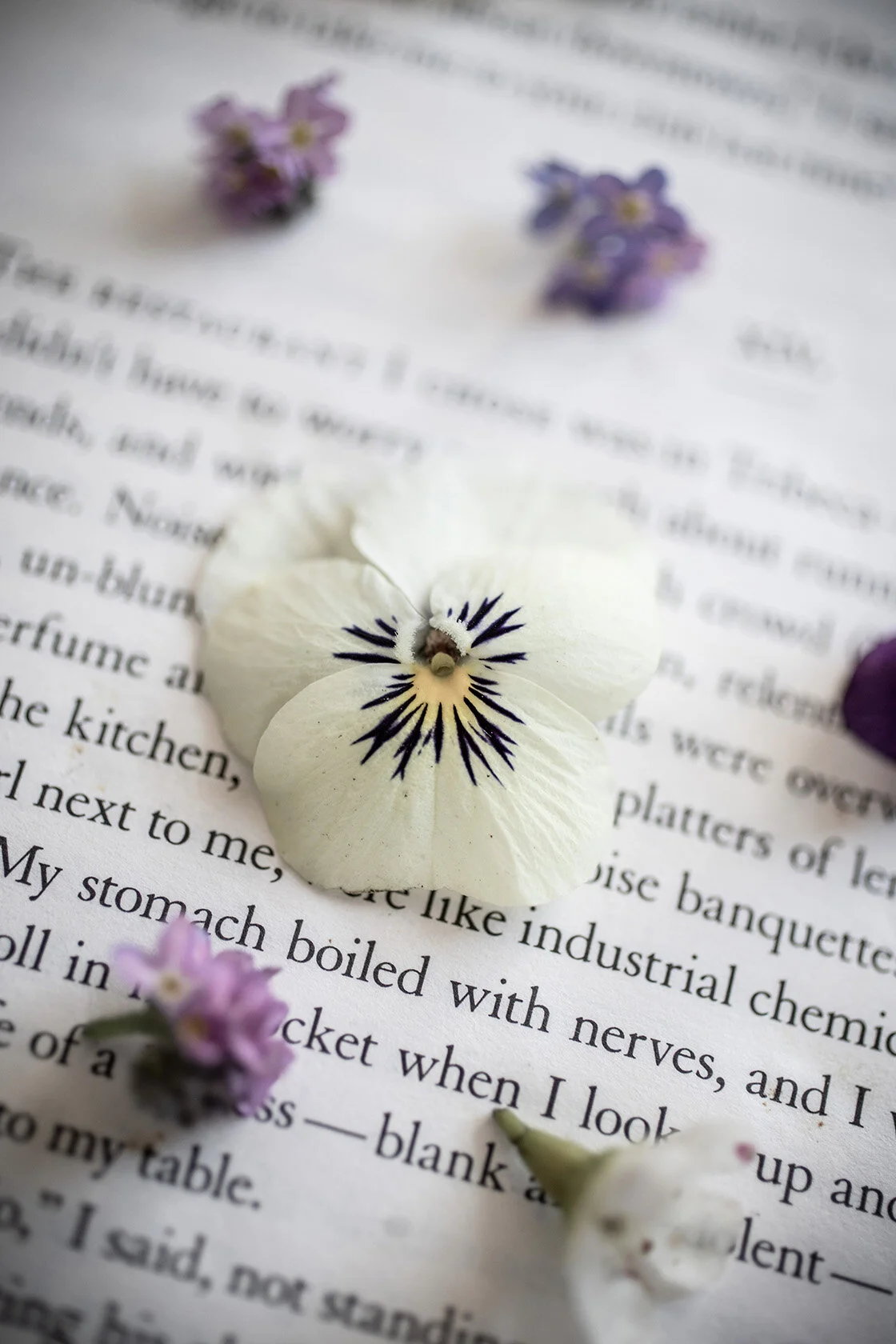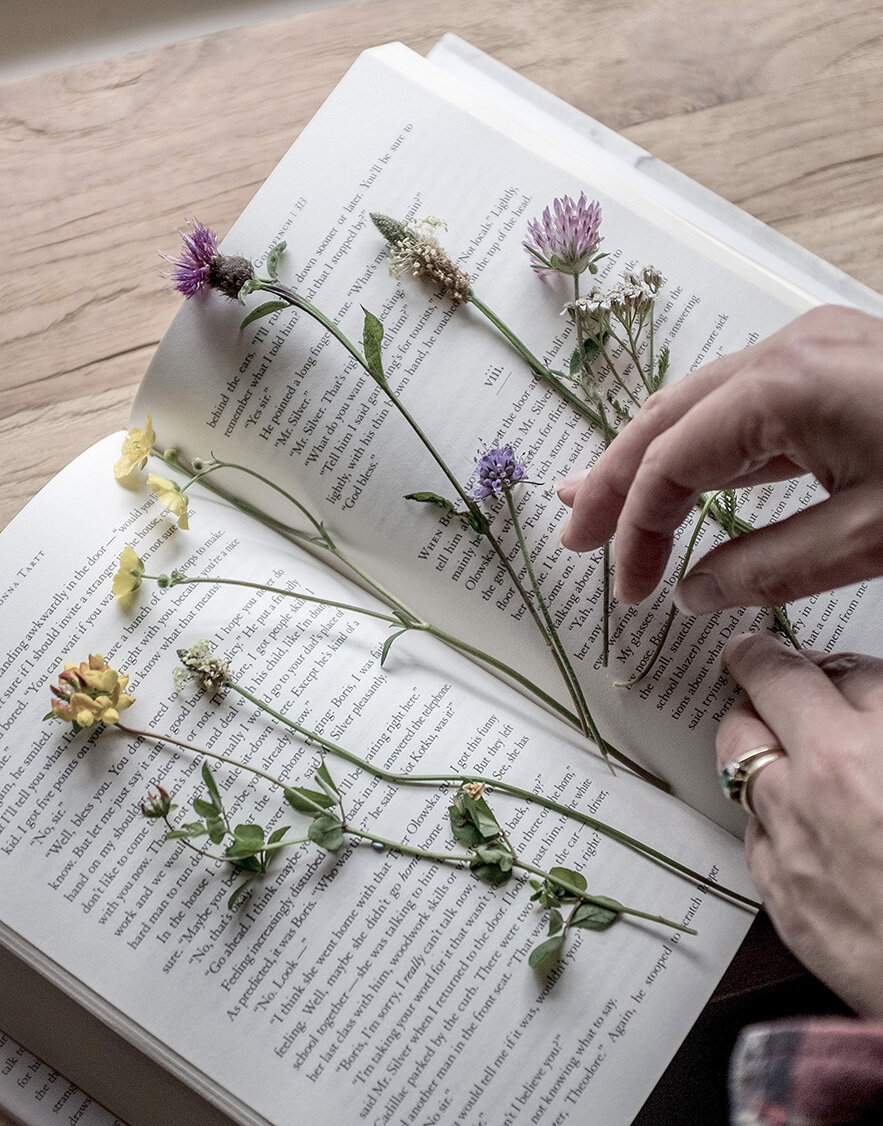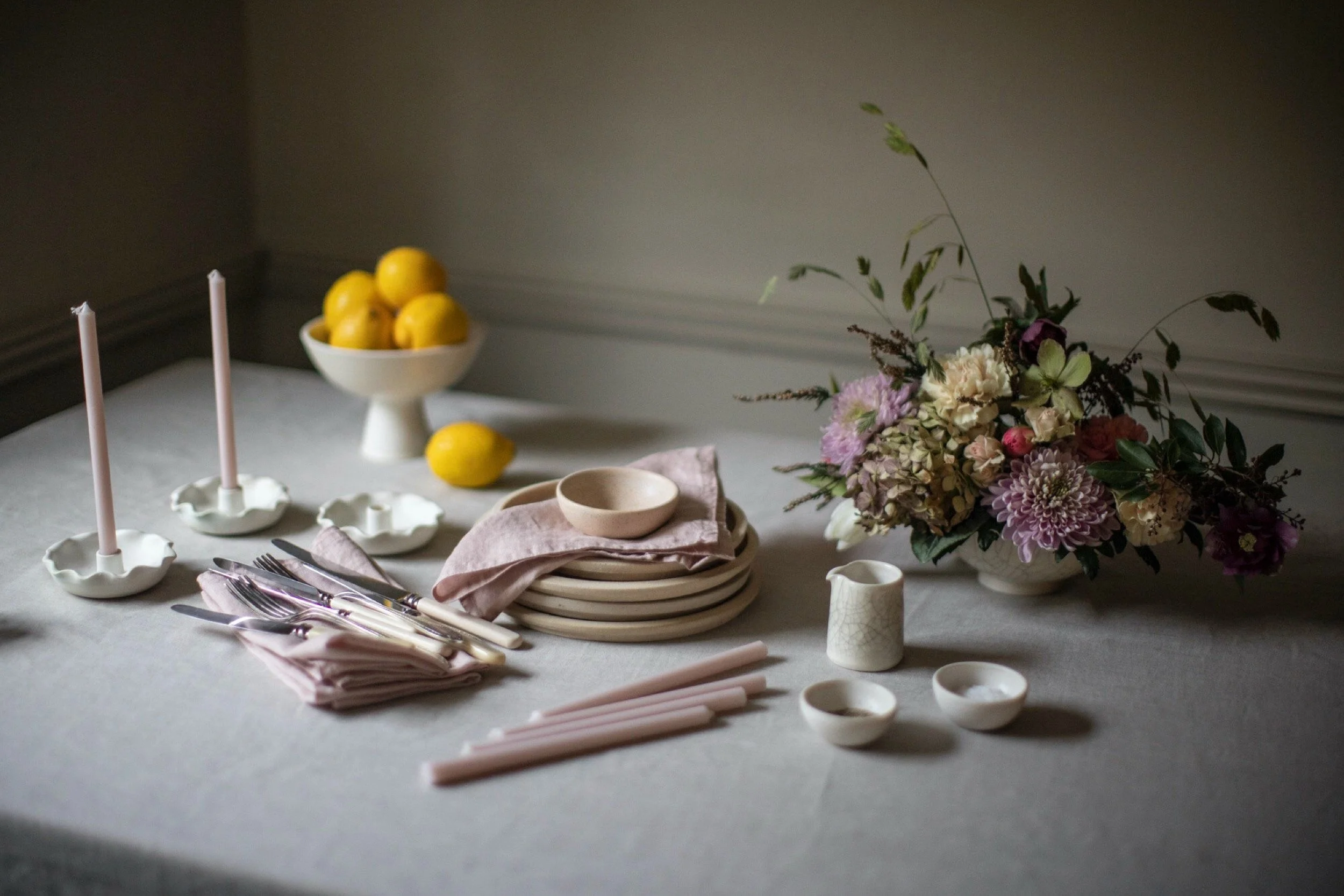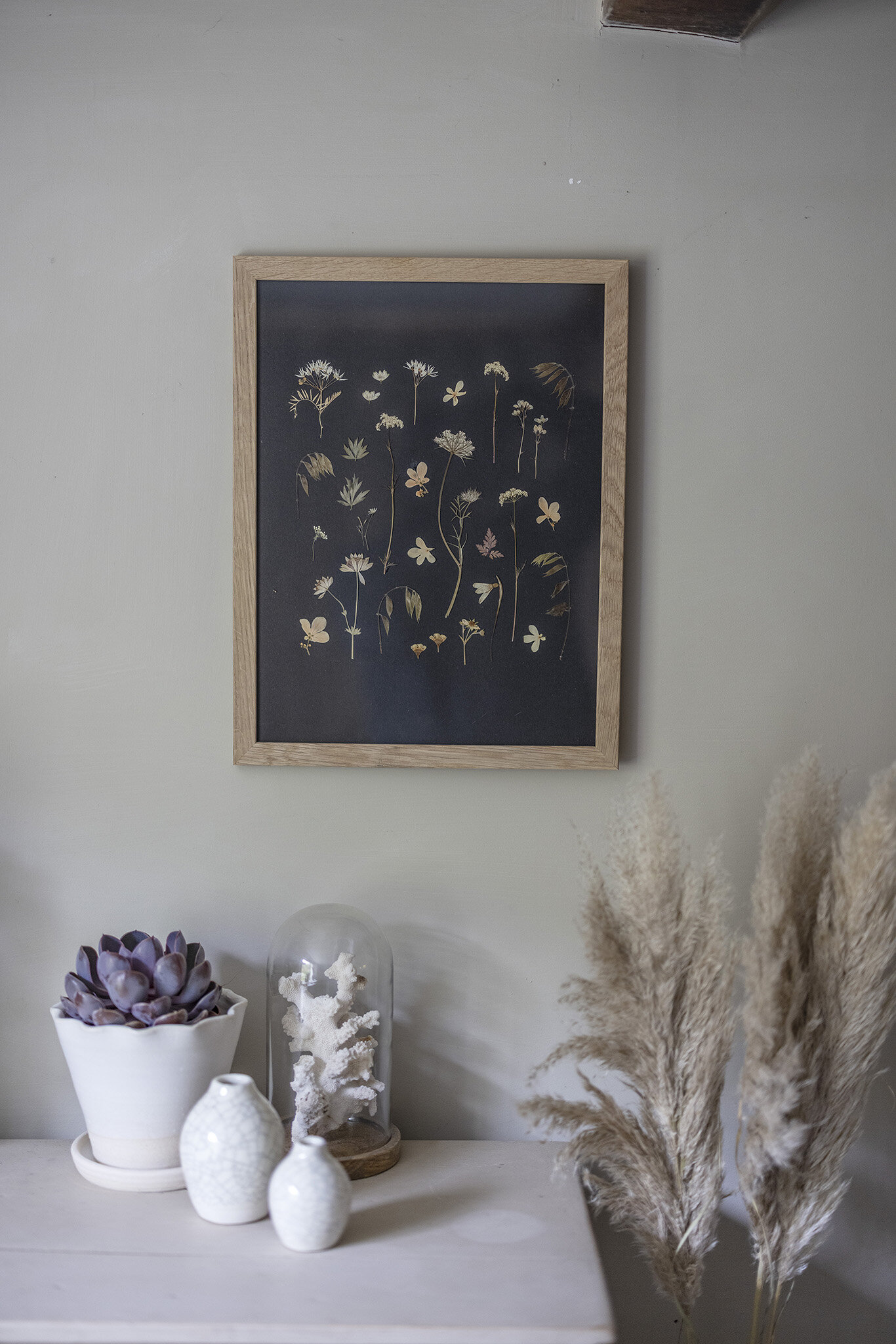How to Press Flowers: A Guide for Beginners
For me, flower pressing will forever be associated with childhood memories of summer days spent happily gathering wild meadow flowers with which to fill the wooden press I was given for my eighth birthday. The highlight of my primary school years was the annual flower pressing competition, which the whole school took part in (there were only twenty of us). Points were awarded for the most species found, how we’d identified them and how we presented them with their names neatly written out in pencil underneath. I took great pride in this project and would spend hours walking through the fields near my house, head down, searching for a species that I hoped no one else would find, then wedging them carefully between the pages of the press. I was most disappointed if I didn’t get placed in the top three!
My love of flower pressing was rekindled after I had children. When they were younger, they liked to bring me fistfuls of buttercups, forget-me-nots and meadowsweet when we went out on walks. Not wanting to discard them (they’d never last too long in vases once we got them home), I began putting them in books to preserve them as mementos of our summer walks.
Now, the books in my workroom are filled with countless specimens of flowers and leaves – partly because I can’t resist collecting them, but also because I’ve recently started to use them in my artworks, a process that began when I wanted to make a piece of work to hang on our bathroom wall when we refurbished it recently.
SPRING
Spring is a gift for those who wish to start experimenting with pressing flowers. While there is a while to wait before we can venture out and gather wild flowers, at this time of year there are an abundance of flowering bulbs and early-flowering shrubs that offer up a brilliantly colourful array of pressing potential. Look for snowdrops, dwarf daffodil varieties, fritillaries and primroses. Even if you didn’t plant any spring bulbs back in autumn, these common varieties can be found in flower in your local nursery or florist, and even in some of the supermarkets. What better way to celebrate the end of winter?
SUMMER
Summer is the perfect time for experimenting with pressing those hedgerow pickings from early evenings walks. I find the simplest, most humble flowers are often the ones that press the best; think buttercups, clover, red campion and stitchwort - Top Tip: anything with a bell-shaped flower works particularly well.
AUTUMN
Once the leaves on the trees start to change colour and fall to the ground, there are myriad options for making more colourful leaf pressings. Just to be sure not to pick them from the ground if they’re too dry as they may be too brittle to press. In the garden, the leaves of the peony turn a vibrant pinky red once the flowers have died back, and the gorgeous hues of heuchera leaves will add a splash of colour to your pressing collection. Cyclamen leaves come in a variety of shades and shapes and press beautifully, too.
TIPS ON PRESERVING THE FLOWERS YOU’VE BOUGHT OR COLLECTED
Wild flowers tend not to last long, particularly in summertime, and will quickly wilt, making them unusable for pressing. If you know you’re going out on the hunt for flowers to press, try taking a plastic, lidded tube filled with water and popping them in once you’ve picked them. I got one from a florist and I try to always remember to take it out with me. Alternatively, wrap them in a piece of kitchen towel or fabric soaked in water. You can revive most species by cutting the stems on an angle (to increase the surface area) and plunging into slightly warm water. If they’re very wilted, try leaving them outside (inside the water vessel) and the cooler air will help them perk up again. Always try and press flowers as soon as possible when they’re at their freshest, but avoid pressing when they’re still wet or damp as they’ll stick to the pages and get damaged. I lay mine out on a piece of kitchen towel to dry. If I get impatient I’ll lightly blot them with absorbent paper to get rid of any excess moisture.
THE BOOK METHOD
I use books for my pressing flowers; they’re readily available and provide a simple, go-to method. Make sure you remember which books you’ve used though - I’ve lost count of the times I’ve forgotten and had to pull out every book on the shelf! I now write down which books I’ve used as well as the date I put the flowers and leaves in them as a reminder as to when to open them. Try and wait at least two weeks before opening them up to avoid damaging the flowers - they can easily stick to the pages and tear when they’re not fully dry. I confess that I don’t bother, but it is a good idea to use blotting paper between the pages to avoid damaging the book. If you’re in a hurry to see results, place the book you’ve used under a pile of heavier ones. Otherwise, you can simply put them back on the shelf and wait a few weeks longer to open them.
Sign up to receive our quarterly seasonal Creative Living Journal
DIFFERENT TYPES OF FLOWERS TO TRY:
Spring flowers
Forget-me-nots, dog violets, snowdrops, snowflakes, tete-a-tete dwarf daffodils, crocuses, primula, snake’s head fritillaries, bluebells, pansies and violas
Wildflowers
Buttercups, clover, red and pink campion, ragged robin, yellow and purple veitch, common yarrow, silverweed, meadow cranesbill, field scabious, shepherd’s purse, greater stitchwort, wild garlic, water avens
From the garden
Nigella (love-in-a-mist), aquilegia, poppies, astrantia, larkspur, lacecap hydrangeas, geraniums, geums, lily-of-the-valley, flowering herbs (thyme, borage and dill work particularly well)
DON’T FORGET THE LEAVES!
It’s well worth experimenting with different leaves as some press beautifully. I particularly like the greenery on clematis, aquilegia, elder, sweet cicely and cyclamen. Leaves tend to dry out quickly once pressed though and can start to curl, so be sure to get them stuck down as soon as you can
SPRING EDIT
Discover our new range of affordable pressed flower prints here

